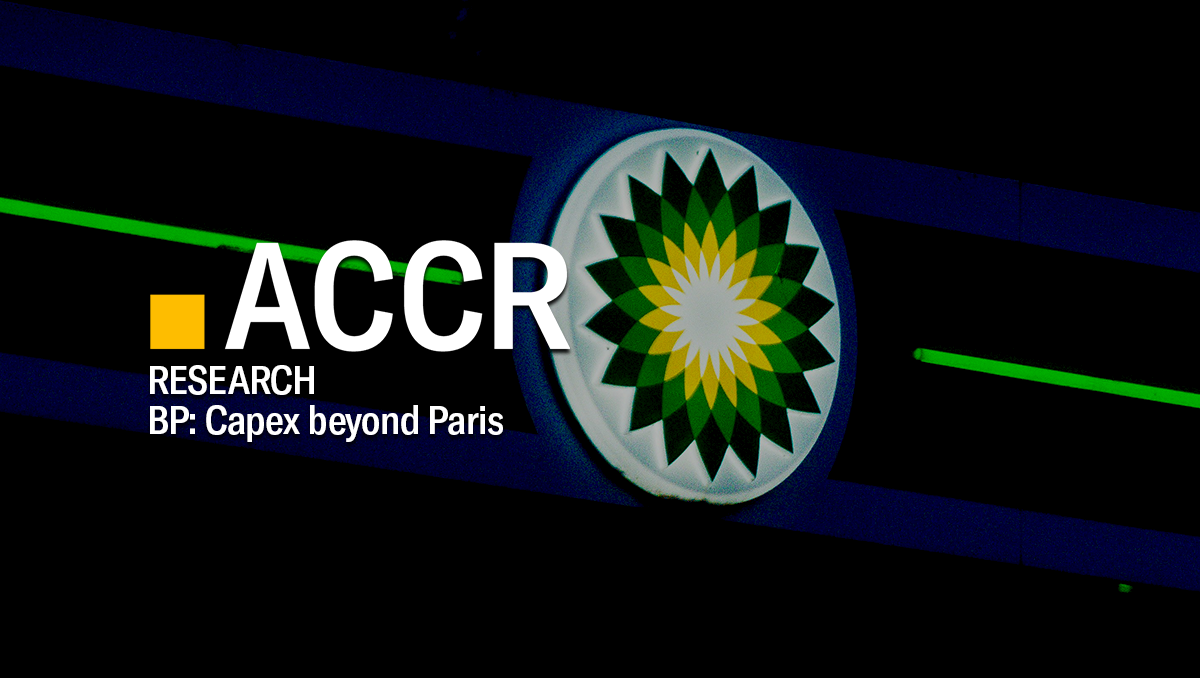Publication BP: Capex beyond Paris
Executive Summary
Investors have long recognised that disciplined capital allocation is critical for BP to manage its resilience to the energy transition. At the 2019 annual general meeting (AGM), 99% of shareholders – and management - supported a binding special resolution which committed the company to annually review and disclose “the consistency of each new material capex investment … with the Paris Goals”.1
Shareholder support for BP’s decarbonisation strategy was seen at the 2022 AGM, when 80% of investors endorsed its climate plan, including a target to reduce hydrocarbon production 40% by 2030.
Despite this, in early 2023 BP significantly weakened its target for reducing hydrocarbon production - down to 25% - and is widely anticipated to scrap it altogether at a forthcoming investor day. We forecast this reduced ambition will result in BP producing 84% more oil and gas in 2030 than it was targeting in 2020.
BP’s capital allocation framework now stands as the primary lever for ensuring that the company's capex is consistent with the Paris goals – which in turn reduces the risk of impairments as the energy transition progresses.
However, the methodology BP currently uses to evaluate its capital allocation is flawed - enabling expenditure that far exceeds a Paris-consistent framework. If the oil and gas industry used the same framework, as a sector it would consume five times the 1.5°C carbon budget and twice the well below 2°C budget.
Our modelling shows that none of BP’s oil and gas FIDs in 2023 aligned with the International Energy Agency’s (IEA) Net Zero Emissions (NZE) pathways for oil and gas, and none of its major unapproved oil and gas projects scheduled for FID before 2030 align with the NZE.
Key points
BP is expected to abandon its target to cut oil and gas output by 2030, which means its capital allocation framework is now the primary lever for the Company to ensure its capex is consistent with the goals of the Paris Agreement.
BP’s framework for evaluating if its capital allocation is consistent with the goals of the Paris Agreement is flawed, because:
- it relies on a weak correlation between modelled oil & gas prices and temperature outcomes. A more credible approach would be based on oil and gas production, which shows a much stronger correlation with climate outcomes
- it excludes projects with capex under $250 million, and FIDs through joint ventures and equity-accounted entities. This means 86% of greenfield oil and gas capex was not assessed under the framework in 2023, and 55% not assessed since 2019.
BP’s capex evaluation framework incorrectly assumes its commodity prices are consistent with the Paris Agreement’s temperature goals. If every oil and gas company applied this approach, the sector would consume five times the 1.5°C budget and twice the well below 2°C budget.
Using our least-cost Paris alignment methodology to evaluate projects within the context of global oil and gas supply, we found that:
- none of BP’s hydrocarbon FIDs in 2023 were aligned with the IEA’s NZE pathways for oil and gas, despite BP’s assertion that they were consistent with the Paris goals
- none of BP’s major unapproved oil and gas projects scheduled for FID before 2030 align with the NZE, and the portfolio does not have a cost advantage.
Recommendations
To improve its project-by-project assessment BP should:
- consider if there is room for additional fossil fuel developments in the 1.5°C (or well below 2°C) carbon budget, and if there is, whether individual projects are cheap enough to compete for this remaining carbon budget against the rest of the global industry.
- apply the framework more broadly, so that a clear majority of the company’s capex is assessed.
This is likely to conclude that:
- the 1.5°C and well below 2°C carbon budgets are consumed by existing oil and gas developments
- no new upstream oil and gas investment is consistent with the goals of the Paris Agreement, raising questions in ACCR's view as to whether BP is meeting the requests of the 2019 shareholder resolution.
Download a PDF of BP: Capex beyond Paris | 16/01/25
Please read the terms and conditions attached to the use of this site.
